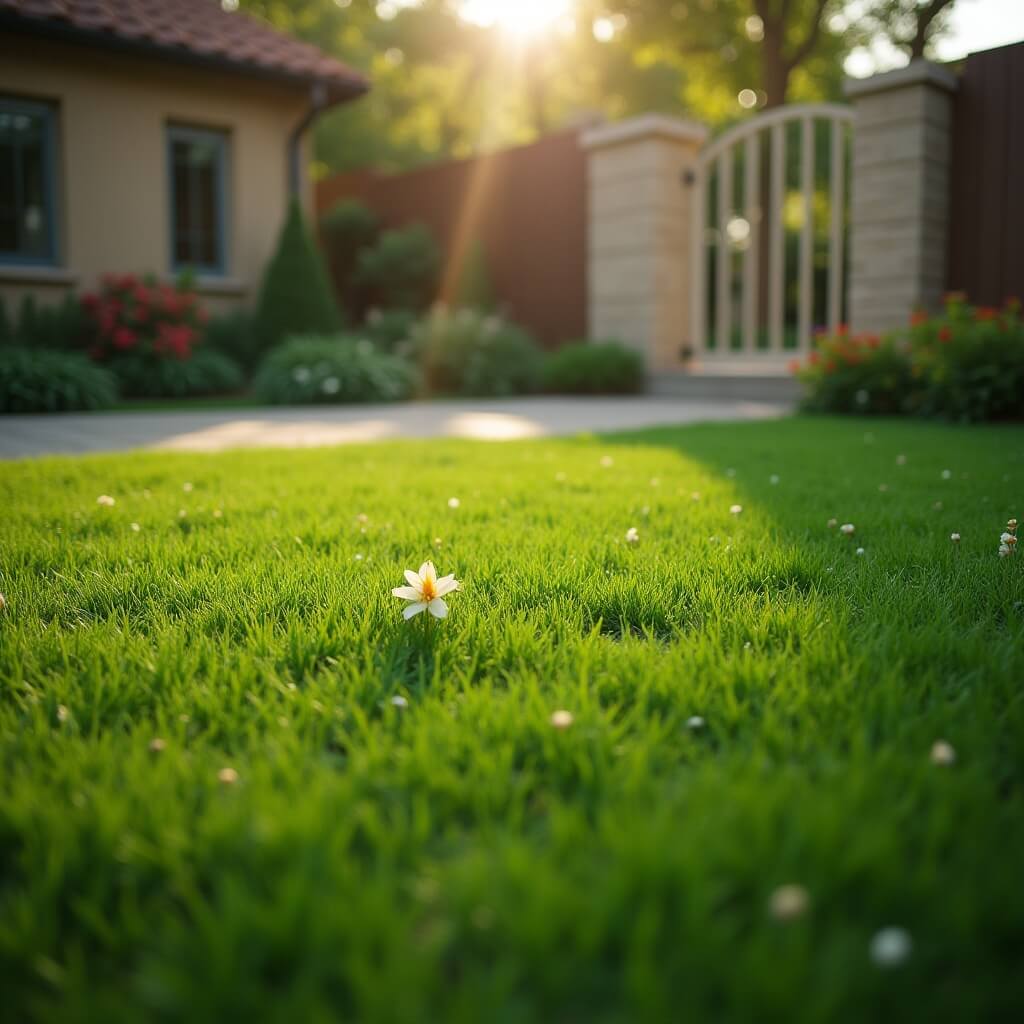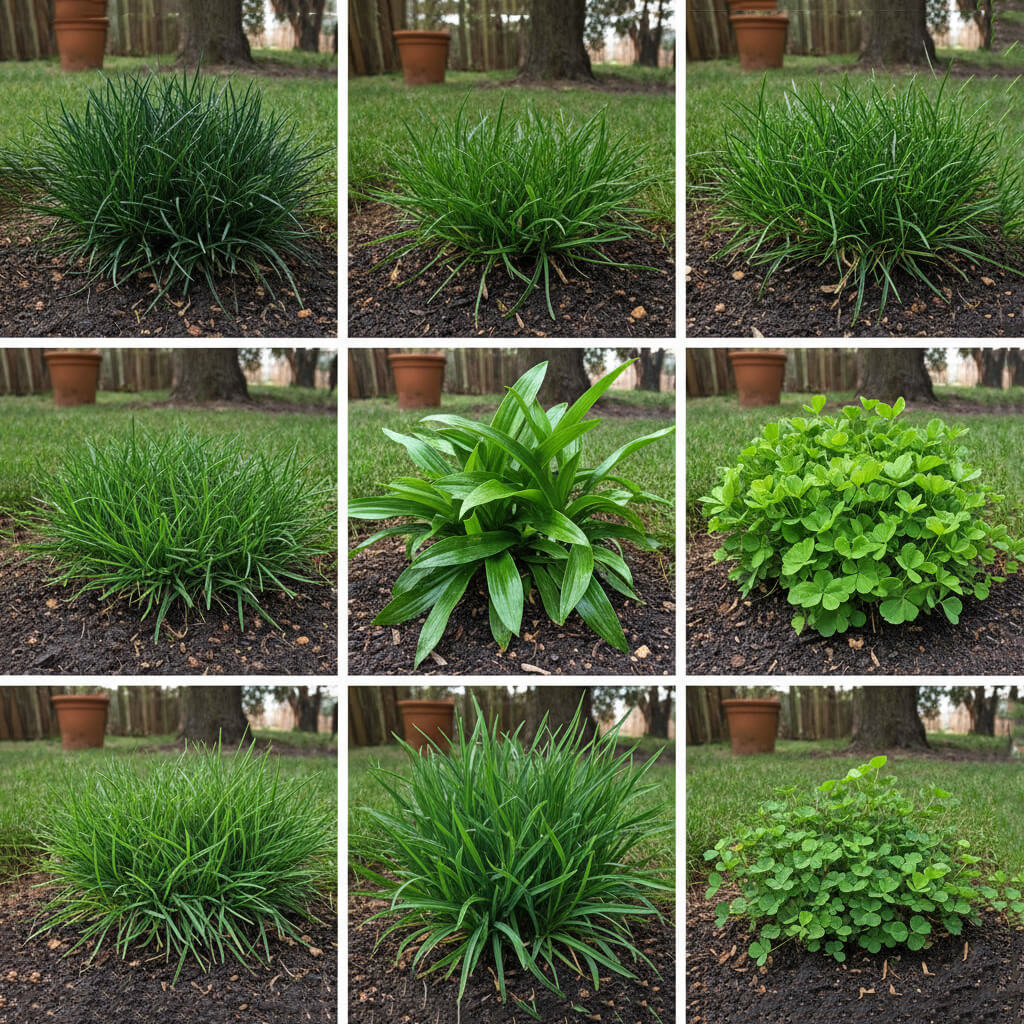Table of Contents
Understanding Lawn Diseases
Lawn diseases can turn a beautiful, healthy yard into a patchy, brown mess almost overnight. Most lawn diseases are caused by fungi that grow in specific environmental conditions. Knowing these conditions and spotting early signs are essential for keeping a lawn free of disease.
"Prevention is always easier and less expensive than treatment when it comes to lawn diseases."
The disease triangle concept states that three factors must be present for a disease to develop.
- Susceptible Host: A grass type vulnerable to the specific pathogen
- Pathogen Present: Disease-causing organisms in the environment
- Favorable Conditions: Weather and cultural conditions that promote disease
Pro Tip
Use the GrassID app to instantly identify lawn diseases from photos and get customized treatment recommendations for your specific grass type.
Most Common Lawn Diseases
Brown Patch (Rhizoctonia solani)
Brown patch is one of the most damaging diseases that affect cool-season grasses in hot, humid weather. It forms circular patches of brown, dead grass that can be a few inches to several feet across.
- Symptoms: Circular brown patches with a "smoke ring" border
- Conditions: High humidity, temperatures 75-85°F, excessive nitrogen
- Affected Grasses: Tall fescue, perennial ryegrass, Kentucky bluegrass
- Treatment: Fungicides containing azoxystrobin or propiconazole
Dollar Spot (Sclerotinia homoeocarpa)
Dollar spot causes small, silver-dollar-sized patches of bleached grass that can combine into larger areas. It's especially common on golf courses and well-kept lawns.
- Symptoms: Small, round, straw-colored spots with reddish-brown borders
- Conditions: Low nitrogen, high humidity, temperatures 60-85°F
- Affected Grasses: Most turfgrass species
- Treatment: Increase nitrogen, improve air circulation, fungicide application
Red Thread (Laetisaria fuciformis)
Red thread shows up as pink or red thread-like structures on grass blades, giving affected areas a noticeable reddish look that can be seen from afar.
- Symptoms: Pink/red threads on grass blades, irregular patches
- Conditions: Cool, wet weather, low nitrogen levels
- Affected Grasses: Perennial ryegrass, fine fescues
- Treatment: Nitrogen fertilization, improve drainage
Pythium Blight (Pythium spp.)
Pythium blight is a rapidly spreading disease that can destroy large areas of turf within hours under ideal conditions. It's often called "grease spot" due to its oily appearance.
- Symptoms: Water-soaked, greasy-looking patches that turn brown
- Conditions: Hot, humid weather, poor drainage, overwatering
- Affected Grasses: All turfgrass species
- Treatment: Improve drainage, reduce watering, fungicide application
Disease Identification Guide
Visual Inspection Steps
Accurate disease diagnosis depends on careful observation of symptoms and patterns.
- Pattern Recognition: Note the shape and size of affected areas
- Blade Examination: Look for lesions, spots, or unusual colors on individual blades
- Border Characteristics: Check for "smoke rings" or defined edges
- Time of Day: Observe symptoms in early morning when dew is present
- Spread Pattern: Document how quickly the disease is spreading
Key Identification Features
Circular Patterns
Brown patch, dollar spot, and fairy ring usually create circular patterns.
Irregular Patches
Pythium blight and summer patch form irregular, spreading patches.
Blade Lesions
Leaf spot and gray leaf spot display distinct lesions on grass blades.
Treatment Strategies
Cultural Control Methods
Many lawn diseases can be controlled with proper cultural practices.
- Proper Mowing: Keep blades sharp and mow at recommended height
- Water Management: Water deeply but infrequently, preferably in morning
- Fertilization: Maintain balanced nutrition without excess nitrogen
- Aeration: Improve air circulation and reduce thatch buildup
- Overseeding: Use disease-resistant grass varieties
Chemical Control Options
When cultural methods are not enough, fungicides might be needed.
Contact Fungicides
Work on contact with the pathogen to provide immediate, short-term control. Examples include chlorothalonil and mancozeb.
Systemic Fungicides
Absorbed by the plant, offering longer-lasting protection. Examples include azoxystrobin, propiconazole, and myclobutanil.
Pro Tip
Rotate among different fungicide classes to prevent resistance development. Always follow label instructions for application rates and timing.
Prevention Methods
Best Management Practices
Preventing lawn diseases is more cost-effective and efficient than treating them after they occur.
- Choose Resistant Varieties: Select grass types with natural disease resistance
- Maintain Proper pH: Keep soil pH between 6.0-7.0 for optimal grass health
- Improve Air Circulation: Prune nearby shrubs and trees
- Reduce Shade: Trim overhanging branches to increase sunlight
- Monitor Irrigation: Avoid overwatering and evening watering
- Dethatch Regularly: Remove excess thatch that harbors pathogens
Integrated Pest Management (IPM)
IPM combines multiple strategies for sustainable disease management:
- Regular Monitoring: Weekly lawn inspections during growing season
- Threshold Levels: Determine acceptable damage levels before treatment
- Multiple Tactics: Combine cultural, biological, and chemical controls
- Record Keeping: Document disease occurrences and treatments
Seasonal Disease Calendar
Spring Diseases
- Red Thread (cool, wet conditions)
- Leaf Spot (emerging grass)
- Snow Mold recovery
- Dollar Spot begins
Summer Diseases
- Brown Patch (hot, humid)
- Pythium Blight (extreme heat)
- Summer Patch
- Gray Leaf Spot
Fall Diseases
- Rust (cool, humid)
- Powdery Mildew
- Leaf Spot continues
- Dollar Spot peaks
Winter Diseases
- Snow Mold (under snow)
- Winter Kill preparation
- Dormant disease monitoring
- Planning for spring
Frequently Asked Questions
What causes most lawn diseases?
Most lawn diseases are caused by fungi that thrive in specific environmental conditions. Factors include excessive moisture, poor air circulation, improper mowing, over-fertilization with nitrogen, and stressed grass from drought or other issues.
When should I apply fungicide to my lawn?
Apply fungicides preventively before disease begins or at the first signs of infection. For recurring issues, apply when conditions favor disease development. Always follow label directions and prioritize cultural controls first.
Can lawn diseases spread to other plants?
Most turfgrass diseases target grass and won't harm other garden plants. However, some pathogens like Rhizoctonia can affect various plant types. Good sanitation practices help prevent any potential spread.
How can I prevent lawn diseases naturally?
Natural prevention involves proper watering (only in the morning), keeping the mowing height correct, enhancing soil health with compost, ensuring good drainage, selecting disease-resistant grass varieties, and maintaining balanced fertility without excess nitrogen.
Why does my lawn keep getting the same disease?
Recurring diseases signal that underlying issues are not being resolved. Common causes include poor drainage, too much shade, compacted soil, incorrect watering habits, or using vulnerable grass varieties. Fix these core problems for long-term prevention.


